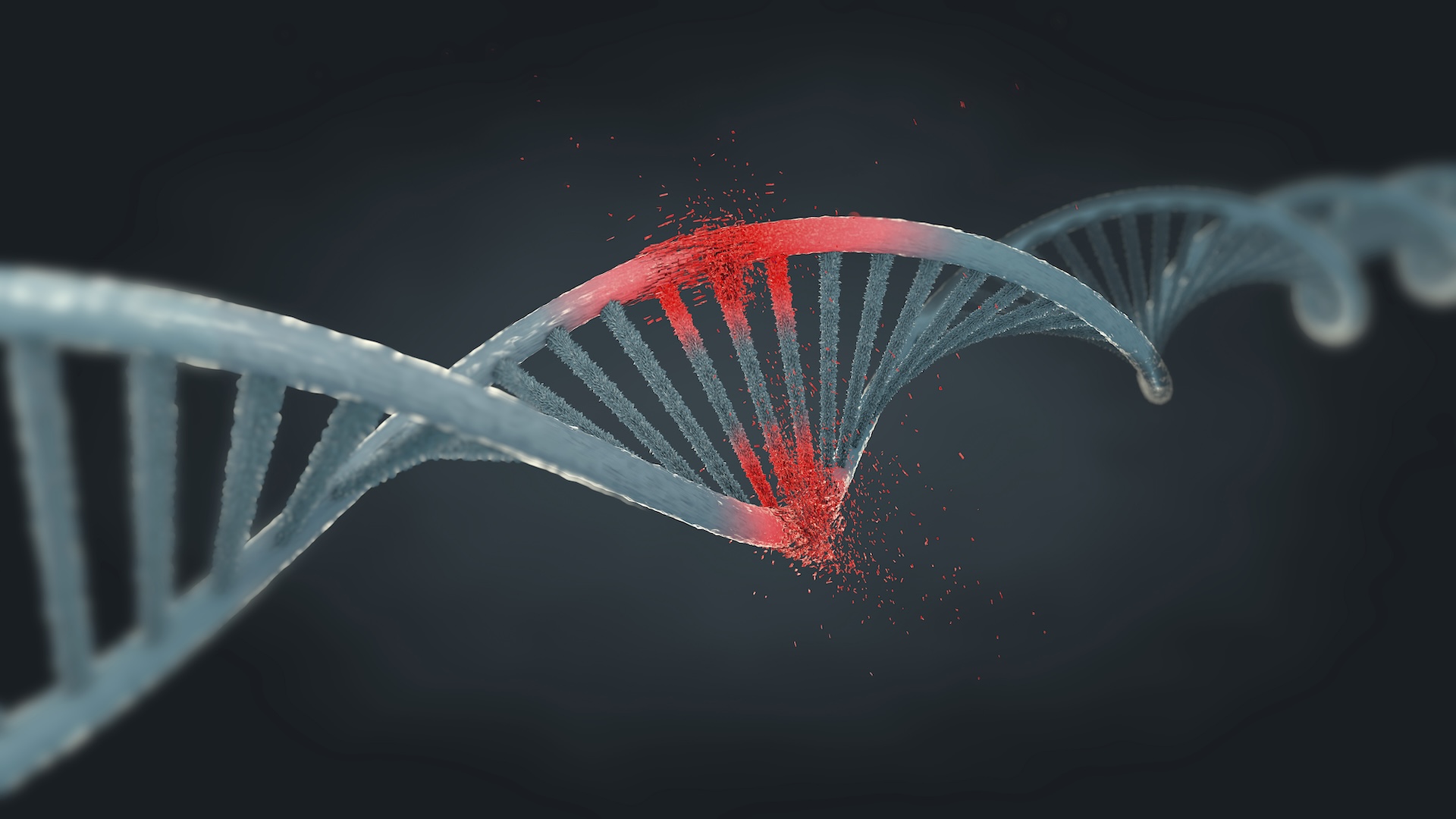Disease name: Werner syndrome, sometimes called “adult progeria”
Affected populations: Werner syndrome is estimated to affect 1 in 100,000 live births worldwide, though its prevalence varies among countries. In Japan, the syndrome affects an estimated 1 in 40,000 to 1 in 20,000 people, whereas the prevalence in the United States is around 1 in 200,000. This difference between locations is partly attributed to “founder effects” — instances where genetic variation declines after a small group of individuals gets separated from a larger population. This limits the gene pool and can cause disease-causing mutations to become more widespread within a population.
Werner syndrome affects males and females at equal rates.
Causes: Werner syndrome is caused by mutations in the WRN gene, which is needed to make the so-called Werner protein. This crucial enzyme unwinds and separates the two strands of a DNA molecule and also removes bits of damaged DNA. This helps cells to repair their DNA following damage, make copies of their DNA as they multiply and use the genetic instructions to make proteins.
The enzyme may also help maintain telomeres, the protective “caps” at the ends of DNA molecules that prevent them from unraveling like frayed shoelaces. Telomeres get shorter with age, and the rate at which they shorten is tied to the rate of biological aging observed and expected lifespan of an organism.
More than 80 different mutations in the WRN gene have been found in people with Werner syndrome. Most often, such mutations cause cells to make a version of the Werner protein that’s too short and doesn’t work. The exact consequences of this aren’t fully understood, but laboratory studies suggest that cells carrying these mutations can’t divide as many times as cells without the mutations can. They also enter senescence — a zombie-like state associated with cellular aging — earlier than healthy cells do. Additionally, mutations in WRN may prevent cells from correcting DNA damage, allowing other, harmful mutations to accumulate.
The syndrome is inherited in an autosomal recessive pattern, meaning it’s caused by a person inheriting two broken copies of the WRN gene — one from each parent.
Symptoms: The symptoms of Werner syndrome typically start to emerge in the second decade of life, around adolescence. Children with Werner syndrome are often thin and have a slow growth rate later in childhood, sometimes missing the usual growth spurt seen in adolescence.
People with the syndrome may start growing gray hair before age 20. By 25, they start to lose hair from the scalp, eyebrows and eyelashes, and they may grow only sparse hair elsewhere on the body, including the underarms and chest. This lack of hair is likely related to hypogonadism, in which the ovaries or testes don’t work well; hypogonadism also undermines the development of sexual organs and the regularity of menstruation.
Werner syndrome also causes people to lose the layer of fat beneath the skin, along with muscle mass and bone density. Atrophy of the vocal cords causes many people to develop a high-pitched, squeaky or hoarse voice. Their skin develops smooth or hard patches, areas of hyper- or hypopigmentation, and redness due to widened blood vessels. Together, these changes cause people with the syndrome to have a “pinched”-looking face, with prominent eyes and a thin, beaked nose.
In some people, soft tissues such as ligaments and tendons calcify over time, becoming stiffer. Calcium can also build up in the cornea of the eyes. By their 20s or 30s, many people with Werner syndrome develop age-related cataracts, a clouding of the lenses of the eyes that usually does not occur before age 50. In their 30s, people with Werner syndrome can develop type 2 diabetes, hardening of the arteries (atherosclerosis), chest pain (angina), heart attack or heart failure.
People with the syndrome are also prone to certain cancers, such as thyroid cancer, melanoma, osteosarcoma and soft tissue sarcoma. Studies conducted in the 2000s suggested people with the syndrome typically die in their early to mid-50s, but with newer medical treatments, people can now survive a few years longer.
Treatments: There is no cure for the underlying cause of Werner syndrome; treatments are aimed at addressing a patient’s specific symptoms. For example, a person may take medications and implement dietary and lifestyle changes to manage type 2 diabetes; undergo surgery and chemotherapy for cancer; and take medicines to counter the hardening of their arteries.
Diagnosing Werner syndrome may involve genetic testing to confirm that a person carries two defective copies of the WRN gene. In addition, the family members of people with Werner syndrome can undergo genetic counseling to see if they’re carriers of mutant WRN genes; those who carry only one copy don’t develop the syndrome but could pass on the condition to their children if their partner also carries a mutant copy.
Couples who are carriers but still wish to conceive a child can potentially explore preimplantation genetic testing, which is genetic testing performed as part of an in vitro fertilization (IVF) procedure.
This article is for informational purposes only and is not meant to offer medical advice.
